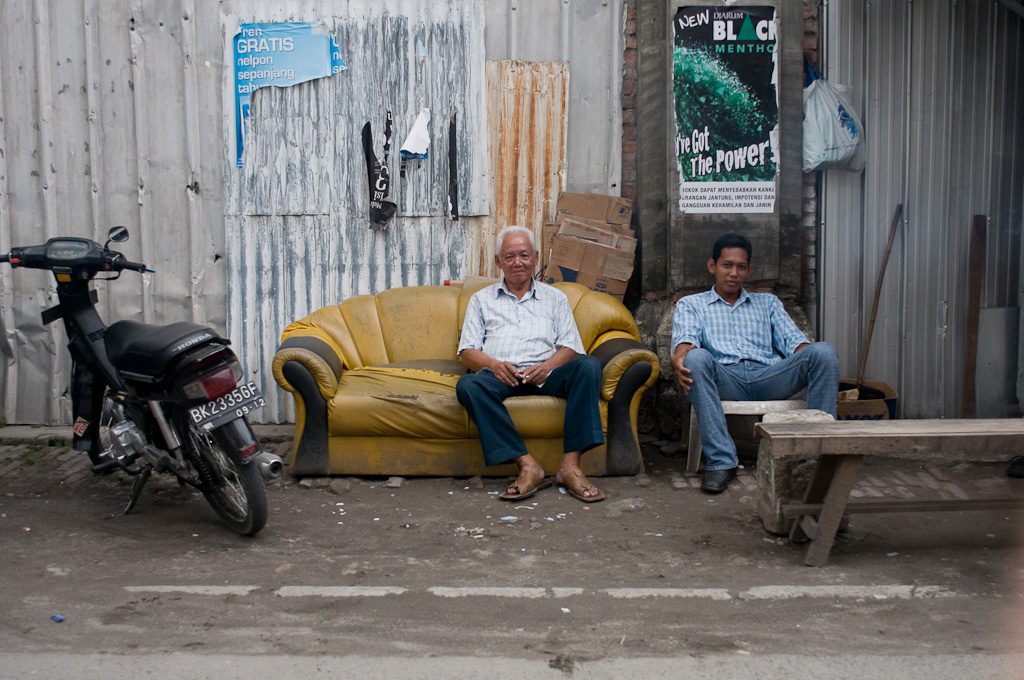A simple and very effective technique for simultaneously putting the participant at ease and putting moral boundaries around the data that the team captures is to clearly state up-front that the participant will be prompted to review all the data that is held on them prior to the team’s leaving the session. In theory this could apply to written notes; audio; video and photographs, but the reality is that it most participants are only interested in reviewing the photos, and sometimes video.
At the beginning of the session, when asking permission for the photographer and/or videographer to start recording, the lead interviewer informs the participant that they will be asked to sign a data consent form at the end of the session, but that just prior to this they will be asked to review and delete any data they don’t like. During this part of the interview the participant is handed the camera and shown how to move from photo to photo, shown how to delete a photo, and is asked to “please delete any photos you don’t like”. If the participant wants to delete all the photos, then frankly the team doesn’t deserve to have them, but the reality is that most people delete a few where the split-second captures their worst side. Some people are particularly image-conscious for example teenage girls and people with high media exposure, and any fears are magnified by the interview covering sensitive topics.
If multiple memory cards are used, then each should be reviewed in turn. Using a separate memory card for each session ensures that no participant will review another participant’s data.
A photographer that knows that the participant will review the photographs instinctively frames the session differently is less likely to sneak a shot when the opportunity arises, and is likely to prune the worst offenders before handing the camera to the participant. Working to the full-circle principle provides the team with a strong moral foundation on which they can then build – it doesn’t mean that the team is freer to do whatever they like, the team that adopts this approach tends to sustain that awareness throughout the project.
The principle of full-circle data collection can be extended to share data back to the participant – which can involve anything from delivering a physical print from the session, sending a selection of shots by email through to providing a copy of every photo on a memory drive. Photos of the participants and the international research team together are particularly valued in emerging markets, and a physical copy is appreciated because computer ownership is less common. If leaving a momento is the primary motivation then a Polaroid photo can deliver the goods, but the symbolic link between bulk of the data and the participant will be missing. Sharing back obviously creates additional workload, and once committed to must be seen through.
In one user study that documented all the content and data generated by a number of families in the UK and Finland the shared back data was an integral part of the protocol – a momento of taking part in the study.
Today we live in a world of data servitude, where commercial organisations own and have the rights to exploit the personal data that lies on their servers. Whilst the effort taken to harvest, sift and draw value comes with the assumption of being able to then seek commercial returns fro this investment, the relationship is one-sided, the process for the most part opaque. To truly go full circle is to give participants the rights and access to their personal data both now and for ever more, something that will enabled by the prevalence of always-on connectivity and a shift the expectations of participants.
Boot note: been writing a lot offline these days – this is a sneak-peak of 4 principles participant data collection.

2 Trackbacks
[…] Jan Chipchase also recently wrote a really good post about making field data transparent to participants, and giving them control over what is finally tabled: Today we live in a world of data servitude, where commercial organisations own and have the rights to exploit the personal data that lies on their servers. Whilst the effort taken to harvest, sift and draw value comes with the assumption of being able to then seek commercial returns fro this investment, the relationship is one-sided, the process for the most part opaque. To truly go full circle is to give participants the rights and access to their personal data both now and for ever more, something that will enabled by the prevalence of always-on connectivity and a shift the expectations of participants. […]
acne behandling…
[…]v photography really is a passion of mine just like this fellow here who fz[…]…